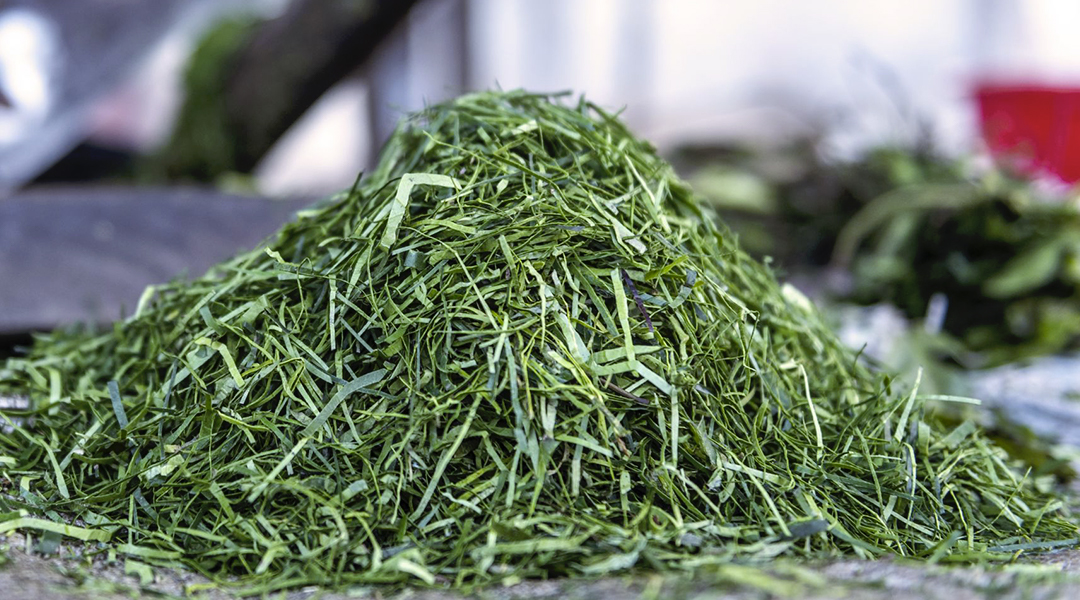- هذا الموضوع فارغ.
- الكاتبالمشاركات
- مارس 28, 2025 الساعة 1:58 م #611310

Afang leaf, scientifically known as Gnetum africanum, is a dark green leafy vegetable widely consumed in Nigeria and other parts of Africa.
Beyond its culinary appeal, the nutritional and medicinal properties of Afang leaf (Gnetum africanum) have been recognized for generations in traditional medicine and are increasingly being validated by scientific research. This article explores the impressive nutritional profile of Afang leaf and its potential health benefits.
1. A Rich Source Of Essential Nutrients
Afang leaf is packed with essential nutrients that contribute significantly to a healthy diet. It is a good source of dietary fiber, which aids digestion and promotes satiety. The leaves are also rich in vitamins, including vitamin A, crucial for vision and immune function, and vitamin C, a powerful antioxidant that protects the body against cell damage.
Furthermore, Afang leaf contains significant amounts of minerals such as iron, essential for preventing anemia, and calcium, vital for strong bones and teeth. This abundance of nutrients underscores the importance of the nutritional and medicinal properties of Afang leaf (Gnetum africanum).
2. High In Antioxidants For Disease Prevention
The vibrant green color of Afang leaf hints at its high content of antioxidants. These compounds, including flavonoids and other phenolic compounds, play a crucial role in neutralizing harmful free radicals in the body. Free radicals are unstable molecules that can damage cells and contribute 1 to the development of chronic diseases 2 like heart disease, cancer, and diabetes.
The antioxidants present in Afang leaf help protect against oxidative stress, highlighting another key aspect of the nutritional and medicinal properties of Afang leaf (Gnetum africanum). Regular consumption of Afang leaf may contribute to a reduced risk of these chronic conditions.
3. Traditional Uses In African Medicine
For centuries, Afang leaf has been utilized in traditional African medicine for its purported therapeutic effects. In various communities, including those in Abuja, Federal Capital Territory, Nigeria, the leaf is used to manage ailments such as malaria, high blood pressure, and inflammation. It is also believed to have properties that can alleviate pain and fever.
While these traditional uses are deeply rooted in cultural practices, modern scientific research is beginning to explore the validity of these claims, further investigating the nutritional and medicinal properties of Afang leaf (Gnetum africanum).
4. Scientific Research Supporting Medicinal Properties
Emerging scientific studies are lending credence to some of the traditional medicinal uses of Afang leaf. Research has indicated that the leaf possesses anti-inflammatory properties, which could explain its use in managing inflammatory conditions. Some studies have also explored its potential anti-malarial effects, investigating the bioactive compounds in the leaf that may inhibit the growth of malaria parasites.
Additionally, research into its effects on blood pressure has shown promising results, suggesting that Afang leaf may play a role in managing hypertension. These scientific investigations are crucial in validating and understanding the mechanisms behind the nutritional and medicinal properties of Afang leaf (Gnetum africanum).
5. Potential Pharmacological Properties Of Bioactive Compounds
The medicinal properties of Afang leaf are attributed to its various bioactive compounds. These compounds, beyond the well-known vitamins and minerals, include alkaloids, saponins, and tannins, which have demonstrated pharmacological activities in laboratory studies.
For instance, some of these compounds have shown antimicrobial properties, suggesting that Afang leaf could be useful in fighting infections. Others have exhibited anti-cancer and anti-diabetic effects in preliminary research.
Further investigation into these bioactive compounds is essential to fully understand their therapeutic potential and to develop standardized extracts or formulations for medicinal use, further unlocking the nutritional and medicinal properties of Afang leaf (Gnetum africanum).
In conclusion, Afang leaf (Gnetum africanum) is more than just a culinary staple; it is a nutrient-rich vegetable with significant medicinal properties. Its impressive nutritiona
l profile, including vitamins, minerals, and antioxidants, contributes to overall health and well-being. Furthermore, its traditional uses in African medicine are being increasingly supported by scientific research, revealing its potential in managing various ailments.
The presence of bioactive compounds with pharmacological activities suggests that Afang leaf holds promise for future medicinal applications.
Understanding the nutritional and medicinal properties of Afang leaf (Gnetum africanum) highlights its value as both a food and a potential source of natural remedies, particularly in regions like Abuja, Federal Capital Territory, Nigeria, where it is an integral part of the local diet and traditional healing practices.
Read Also: Nutritional Benefits And Health Implications Of Soybean Powder Consumption
- الكاتبالمشاركات
- يجب تسجيل الدخول للرد على هذا الموضوع.

